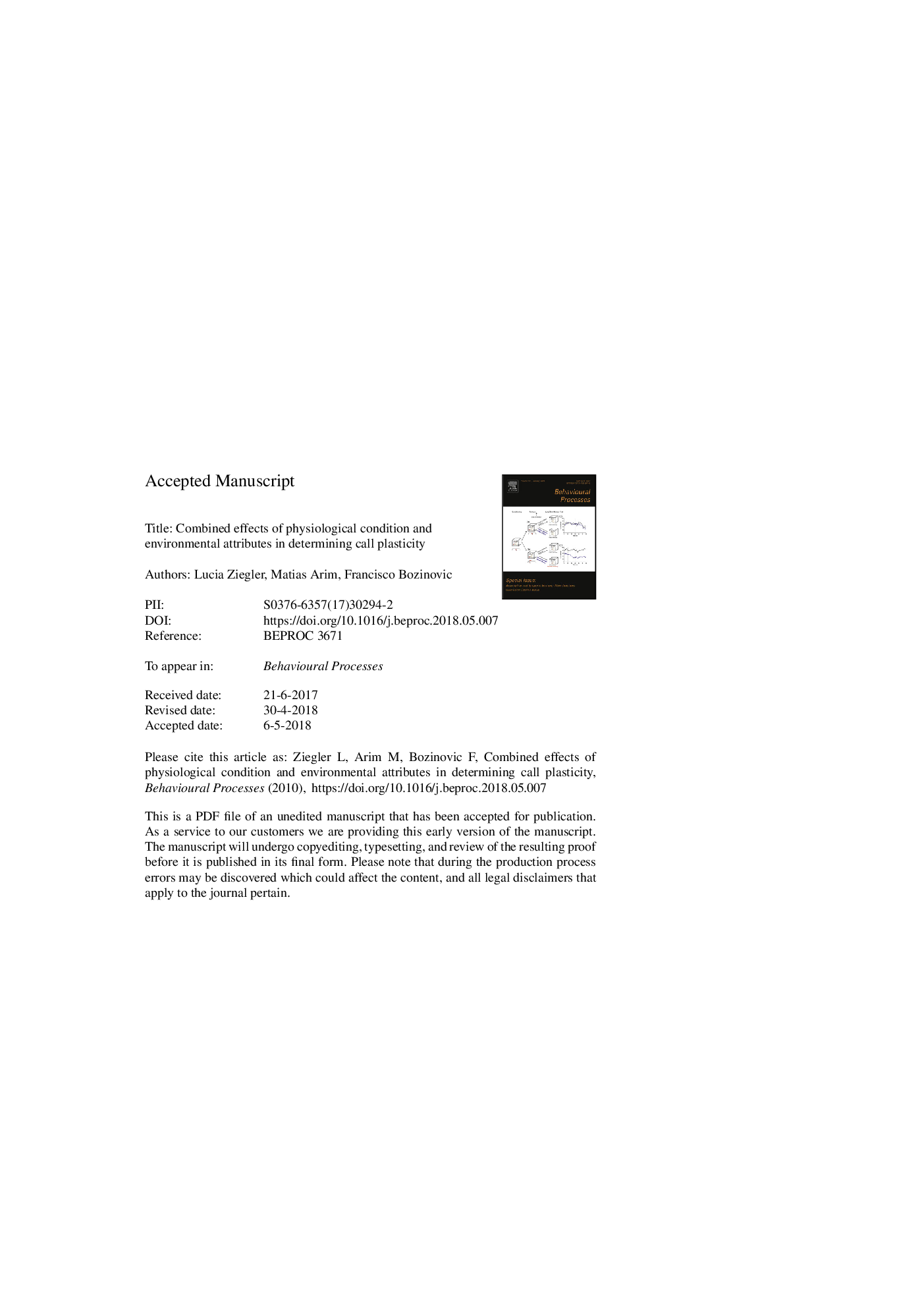| Article ID | Journal | Published Year | Pages | File Type |
|---|---|---|---|---|
| 8496923 | Behavioural Processes | 2018 | 26 Pages |
Abstract
Evidence is growing on the ability of anurans to make immediate call adjustments in response to the propagation properties of the environment. However, our understanding of such flexibility is typically based on dichotomous stimuli (i.e. presence/absence), while its condition-dependence has been little explored. We experimentally studied the ability of adjustment and its condition dependence of advertisement calls of Hypsiboas pulchellus in response to different levels of attenuation. Individuals modified most call parameters analyzed, although the direction of adjustments was contingent on individual identity, level of attenuation and trait category (i.e. spectral or temporal). Under low attenuation conditions males lengthened some call elements, partially supporting the hypothesis of plasticity oriented towards maintaining signal transmission, but this trend was not present in the high attenuation treatment. Also, under both attenuation treatments males gave higher frequency notes, as expected from an energy-saving response to changes in social environment or reducing attractiveness due to risk perception. Across treatments individuals in better condition tended to exhibit higher plasticity. These results indicate that call structure could depend on the integration of different cues such as habitat propagation characteristics, acoustic competition for females, and predation risk, while the ability to behave flexibly depends on current body reserves.
Related Topics
Life Sciences
Agricultural and Biological Sciences
Animal Science and Zoology
Authors
Lucia Ziegler, Matias Arim, Francisco Bozinovic,
